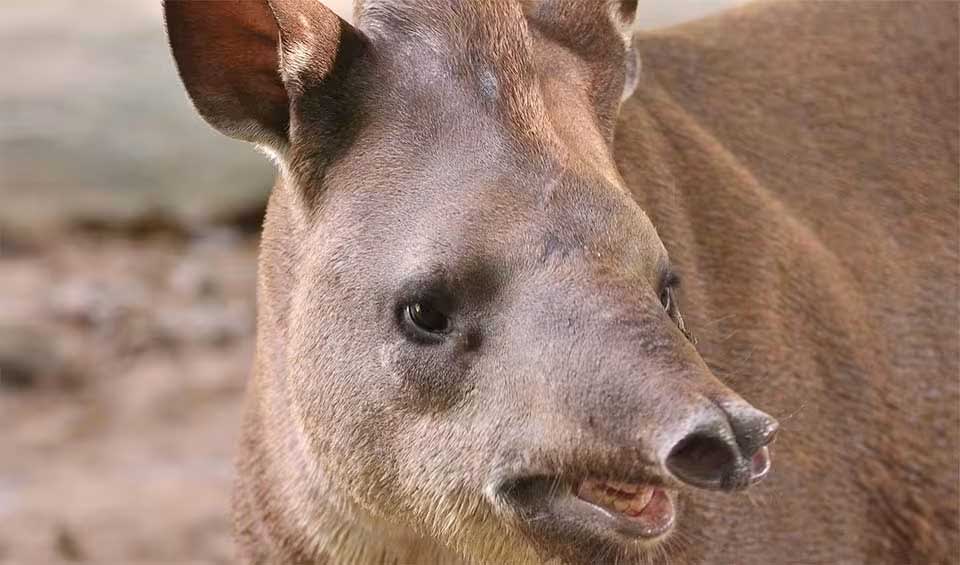Characterized by its distinctive brown coat, which can vary in shade from a lighter to a much darker hue and complemented by darker limbs, this species stands out for its unique appearance in the animal kingdom. Perhaps the most notable feature of the Brazilian tapir is its long, flexible snout, resembling a short trunk. This prehensile snout serves as a versatile tool, enabling the tapir to deftly grasp and manipulate leaves, buds, and other vegetation, which comprises the bulk of its diet. In an aquatic environment, this same snout transforms into an effective snorkel, allowing the tapir to breathe while submerged.
The adaptability of the Brazilian tapir is further exemplified in its reproductive strategy and the care of its offspring. Newborn tapirs are born with distinctive white stripes and spots on their brown coats, a natural camouflage that protects them from predators in the dappled light of their forest and riverine habitats. This protective coloration gradually fades as they approach six months of age, transitioning to the solid brown coat characteristic of adult tapirs, signaling a new phase in their development and an increased ability to fend for themselves.
Brazilian tapirs are not only remarkable for their physical adaptations but also for their prowess in navigating aquatic environments. They are excellent divers and swimmers, capable of diving into the water to forage for aquatic plants along the riverbed. This ability not only highlights their adaptability but also underscores the critical role they play in their ecosystems as seed dispersers and as part of the aquatic food web.
Distribution
 Argentina
Argentina Bolivia
Bolivia Brazil
Brazil Colombia
Colombia Ecuador
Ecuador French Guiana
French Guiana Guyana
Guyana Paraguay
Paraguay Peru
Peru Suriname
Suriname Venezuela
VenezuelaDid you know?
- Their natural predators are only the jaguars. Caimans will consume young tapirs.
Anything we've missed?
Help us improve this page by suggesting edits. Glory never dies!
Suggest an editGet to know me
Terrestrial / Aquatic
Altricial / Precocial
Polygamous / Monogamous
Dimorphic (size) / Monomorphic
Active: Diurnal / Nocturnal
Social behavior: Solitary / Pack / Herd
Diet: Carnivore / Herbivore / Omnivore / Piscivorous / Insectivore
Migratory: Yes / No
Domesticated: Yes / No
Dangerous: Yes / No





